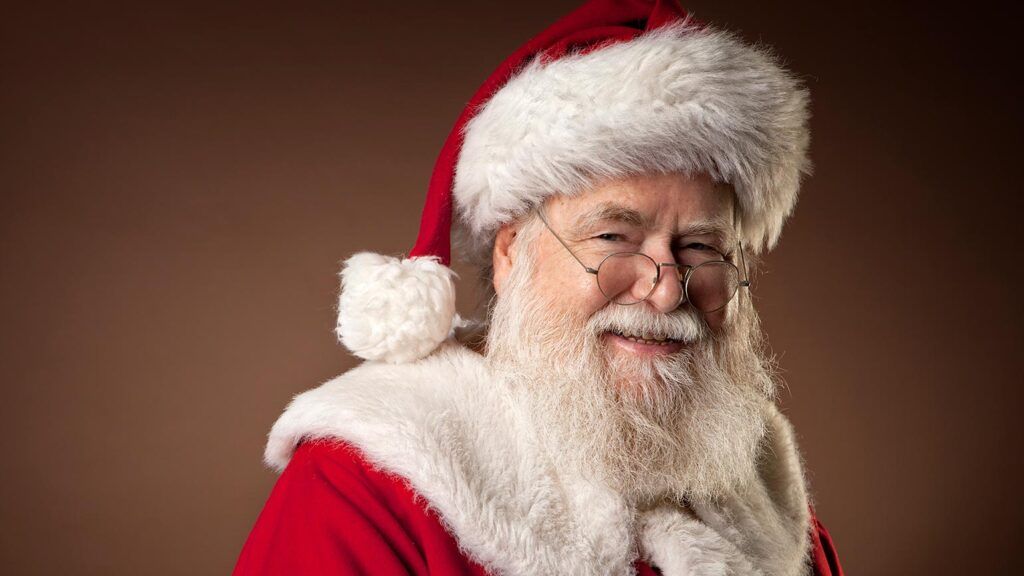It is widely known that Santa Claus was inspired by Saint Nicholas of Myra, an early Christian bishop of Greek descent from a town in Turkey that is now called Demre. Similar characters inspired by St. Nicholas can be found in many other countries, along with some other holiday gift-givers who have different origins. Let’s pay a visit to a few of these Santas (by other names) from around the world.
Santa in the Netherlands: Sinterklaas
Associated with Christmas in the Netherlands, Belgium, Luxembourg and northern France, Sinterklaas is one of the key predecessors of Santa Claus. Like Santa, he was inspired by Saint Nicholas and is generally depicted with a full white beard.
Sinterklaas brings presents on December 6, St. Nick’s feast day, or in some regions, the night before. He is dressed in red bishop’s garb and rides a white horse, carrying a large red book that includes the names of children who have been good or naughty. He is assisted by Swarte Piet, a Moor from Spain.
The Dutch, who were the first Europeans to settle what would later be New York, brought Sinterklass with them, where he slowly morphed into the Santa Claus we know today.
Santa in the United Kingdom: Father Christmas
Father Christmas has long served as the Santa-esque figure in the United Kingdom.
When Father Christmas debuted in the 17th century, he was something of a political figure: England’s Puritan-led government at the time was trying to do away with Christmas, and in response to that effort sprang up Father Christmas, who represented holiday feasting and merry-making (but not the giving of gifts). Santa Claus began to make inroads in England in the mid-19th century, and thereafter Father Christmas took on the gift-giving role.
The two bearded gentlemen are almost interchangeable today, though in traditional depictions, Father Christmas tends to be a bit more lean than Santa and sports a long-hooded gown of red, trimmed with white fur.
Santa in Germany: Christkindl
Christmas markets have been popular in Germany since the 1500s, but gift-giving back then occurred on November 11 and December 6, the feast days of St. Martin and St. Nicholas, respectively. In an attempt to take the focus off Catholic saints, the religious reformer Martin Luther introduced a figure known as Christkindl (Christ Child), a child (later a young girl) usually depicted with blond hair and angel wings who brings presents to children. It’s thought that in English-speaking countries, the term Christkindl transformed into another name for Santa Claus: Kris Kringle.
For some Germans and German-speakers, it’s the Weihnachtsmann who brings presents; he is largely a German version of Santa Claus and Father Christmas.
Santa in France: Père Noël
Sometimes called Papa Noël, this gift-giving gentleman, like Father Christmas, wears a fur-lined cape and hood. Traditionally, French children left shoes by the fireplace with treats in them which were replaced with small gifts by Père Noël, though nowadays, the gifts are often larger and found under the Christmas tree. The gift-giving happens after Christmas Eve Mass rather than on Christmas morning.
In some parts of eastern France, it’s Tante Arie (Aunt Arie) who, accompanied by a donkey, brings gifts to well-behaved children.
Santa in Spain: The Three Kings
In a tradition dating back to the fourth century, the familiar trio of wise men—Caspar, Melchior, and Balthasar—are the ones who bring presents, and it happens on (or on the night before) the Epiphany on January 6—the day the wandering Wise Men came upon the Christ child. Children leave treats and drinks for the Kings’ camels.
The tradition began in the Roman province of Hispania (which is now the countries of Spain and Portugal) and later spread with the Spanish and Portuguese colonization of Mexico, Central America, and South America.
Santa in Russia: Ded Moroz
This distinctly Russian figure of legend predates Santa, but shares many of his characteristics. Originating in Slavic mythology, he was adopted and adapted by the Russian Orthodox church. He wears a long fur coat of red and blue, a long magic staff and travels in a sleigh pulled by three horses, bringing gifts to children.
Unlike other Santa-esque figures, Ded Moroz has a female helper: his granddaughter, Snegurochkal who wears silver and blue robes and a fur hat or snowflake crown.
Santa in Czech Republic: Jezisek
Though Santa has made inroads in recent decades, tradition in the Czech Republic has it that Jezisek (Baby Jesus) brings gifts on Christmas Eve. Children are kept in another room while adults prepare a festive meal, decorate the tree and arrange the presents beneath it before allowing the children back.
Gifts are also shared on December 5, the evening before St. Nicholas Day. These are smaller gifts, brought by Mikulas (St. Nicholas).
Santa in Poland: Swiety Mikolaj
Dressed in bishop’s robes, Swiety Mikolaj (St. Nicholas) visits Polish homes, bearing gifts for good children, on his feast day, December 6.
But there are other gift-bearing characters in certain parts of the country, including Gwiazdor (Starman), Dziadek Mróz (Grandfather Frost), Aniolek (Christmas Angel) and Dzieciątko (the Child).
Santa in Italy: La Befana
Santa is becoming more popular in Italy (where he is known as Babbo Natale), but the country’s traditional holiday gift-giver is La Befana, an old woman who resembles a Halloween-style witch but is kind and brings candy and presents to well-behaved children on January 5, Epiphany Eve. She’s even said to sweep the floor before departing the recipients’ home, signifying a sweeping away of that year’s problems with the arrival of a new year.





